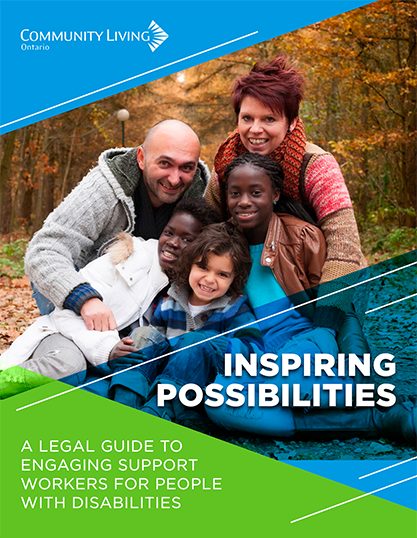As the international COVID-19 Pandemic becomes a reality in Canada, employers in the disability and developmental services (DS) sectors face unprecedented challenges. In this blog post, we’ve highlighted a number of the recurring questions our clients have raised with us over the past few weeks. As always, each agency’s circumstances will vary and it is important to keep in mind that the following information is general legal information only and does not constitute legal advice.
Key questions for employers include:
-
- I heard that the government of Ontario is introducing new leaves of absence, what do I need to know?
While the legislation has not be introduced yet, the government has indicated that new legislation will include COVID-19 specific provisions, including:
-
-
-
-
- Prohibiting employers from requiring employees to provide sick notes in order to substantiate leave for COVID-19 related purposes; and
- Provisions for unpaid job protected leaves for employees who are:
-
-
- Quarantined;
- Self-isolating due to COVID-19;
- Caring for school children due to COVID-19 related school closures; or
- Caring for a loved one with COVID-19.
-
-
-
-
-
PooranLaw will provide an update with all the details when this legislation is introduced.
-
- I heard that the government of Canada is introducing new assistance for workers and businesses; what do I need to know?
This morning, government of Canada announced a new Emergency Support Benefit for employees who are not eligible for EI. They will receive up to $900 bi-weekly if they are sick or unable to work due to COVID-19. Details on this new benefit are still forthcoming, but it will be support for your employees who do not have the required hours to qualify for EI.
The government of Canada also announced a new 10% wage subsidy for small businesses to try to incentivize keeping employees at work. It is not clear yet what the eligibility requirements for this subsidy will be, and how it will affect not-for-profit organizations in the DS sector.
PooranLaw will provide an update when further details of these plans are released.
-
- Schools are closed, daycares are closed, bars, restaurants and theatres are closed – At what point should we close our day supports program?
Many DS Sector employers are facing difficult choices when it comes to which programs or services to close or discontinue now that it appears COVID-19 is indeed circulating in the community. Programs may include residential group living supports, supported independent living, day programs, job coaching and employment supports, and respite, among other things.
To date, there has been no official statement as to which of these programs should continue from the Ministry of Children, Community and Social services, and therefore employers are left to make determinations on their own. There is, however, direction from the Public Health Agency of Canada that all non-essential gatherings be avoided.
The question then is, what is essential? Most would agree that residential supports (including group home, supported independent living, and even in-home supports in family homes are essential). Day supports, job coaching, employment supports and respite, on the other hand may fall into a grey area. While some may consider these types of supports “non-essential”, for many people and families these supports may be all that stands between them and crisis.
Each organization will have to make an informed choice about the needs of the people it supports, the risk associated with continued operation, and the practical possibility of preventing infection if an organization does continue to operate such programs. Ultimately, most organizations are opting to shutter non-residential programs given the inability to control and monitor exposure outside of programming hours and the high risk of infection in congregated or community-based programming.
-
- What rights do employees have when an employer chooses to close a program?
Employee rights on program closure will depend largely on the status of the workers within the program. Employees who are represented by a union will typically have a collective agreement in place that addresses the issue of “layoffs”, i.e. temporary or permanent cessation of work. The provisions of the collective agreement will typically deal with employee rights in such circumstances, including the order in which employees will be laid off (usually by seniority), their right to displace (or bump) less senior employees in other programs, notice requirements, involvement of the union, recall procedures, among other things.
For non-union workers, employee rights are usually less clear. In the absence of an established practice, written contract, policy statement or other contractual right to “layoff” employees, temporary layoffs may constitute a constructive dismissal (i.e. that they have been terminated) and a constructively dismissed employees may seek wrongful dismissal damages as a result. A review of your practices and contractual documents will be essential for determining what an employee’s rights will be in these circumstances, including what the exposure may be if an employee is deemed to have been terminated.
-
- What kind of information can an employer require an employee to disclose?
For employers that will continue to operate some or all of their programs during the Pandemic, information gathering is essential for mitigation and containment purposes. While in most circumstances it would be unlawful to require disclosure of diagnostic information pertaining to the person or their family, the degree of risk to staff and people supported likely justifies intrusive questioning that may form a part of your daily screening process for employees, people supported and visitors alike. Information may include, diagnostic information, symptoms, monitoring for fevers, travel related information, and information pertaining to close contact with persons infected or showing symptoms.
-
- When can an employer require an employee to stay away from work?
An employer can place an employee on an involuntary medical leave if they are coming in to work while sick, at risk of being sick, or have been advised, directed or recommended to self-isolate. Excluding employees from the workplace, particularly without pay, always comes with some degree of risk. However, given the severity of the threat of COVID-19 and existing directions from government authorities, the risks of sending an employee home involuntarily at this time are lower than usual.
-
- When must an employee be excused from work due to COVID-19?
An employee must be excused from work if they are unable to work due to illness (such as COVID-19) or where they have human rights protected circumstances requiring absence from work during the Pandemic (disability, family circumstances, age related restrictions).
Employees also have the rights to job protected leave under any of the currently existing Employment Standards Act leaves (e.g. sick leave, family responsibility leave, critical illness leave, family caregiver or family medical leave etc.).
Further, the provincial Government has announced that it will create a new set of leaves to deal with child-care, self-isolation, illness, quarantine, related to COVID-19. When this legislation is introduced we will provide an update.
-
- When does an employer have to provide paid leave?
An employer will have to provide paid leave if they have a contractual, collective agreement, or policy commitment to do so. However, where there is no such commitment, employers are not required to provide paid leave (and employees can claim employment insurance sickness benefits as compensation). However, where the employer places employees on involuntary leave, or is trying to incentivize sick employees to stay away from work, placing them on an unpaid leave may increase legal risks.
-
- When can an employee working in residential care refuse to work?
Generally, employees have a right to refuse unsafe work (for example when they believe in good faith believe that their health and safety (or those of other workers) is endangered by the conditions of the workplace (such as by a contagious disease).
However, special rules apply to workers in the health care and developmental services residential care sectors. In these circumstances, employees do not have the right to refuse unsafe work, if the refusal could result in a risk to the health and safety of a person supported or others in the workplace.
Employers must also take into account human rights related obligations to workers who have health conditions or protected familial situations necessitating accommodations.
-
- When will a staff member that is out of work due to Covid-19 be eligible for EI?
Staff who are out of work because they are ill, quarantined, or in self-isolation on a public health order or employer request are eligible for EI sickness benefits immediately (the normal one-week waiting period has waived).
Staff who are out of work for reasons that are not their fault (e.g. economic lay off related to COVID-19) will be entitled to EI after a one week waiting period, though they should apply immediately after ceasing work. It does appear that this waiting period may also be waived but that has not been made official as of March 18, 2020.
-
- Where can I learn more…
If you have any questions about your obligations or pandemic response needs during this time, contact our Employment and Labour Law Partner, Cheryl Wiles Pooran at cwpooran@pooranlaw.com or any other member of our firm’s labour and employment group.
Note: This article provides general information only and does not constitute, and should not be relied upon as, legal advice or opinion. PooranLaw Professional Corporation holds the copyright to this article and the article and its contents may not be copied or reproduced in any form, in whole or in part, without the express permission of PooranLaw Professional Corporation.







